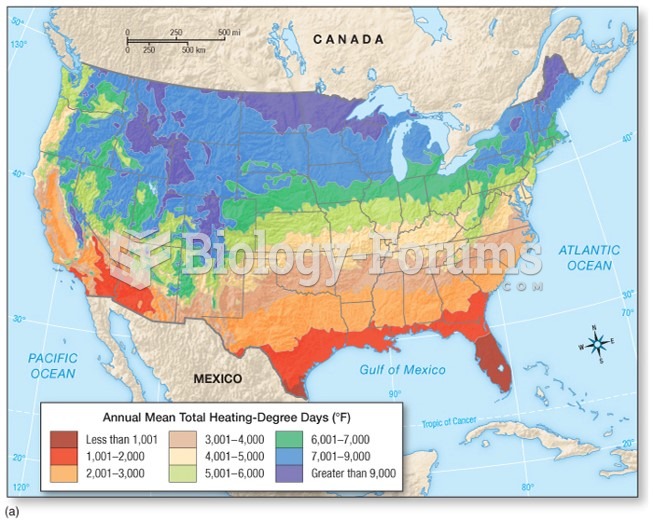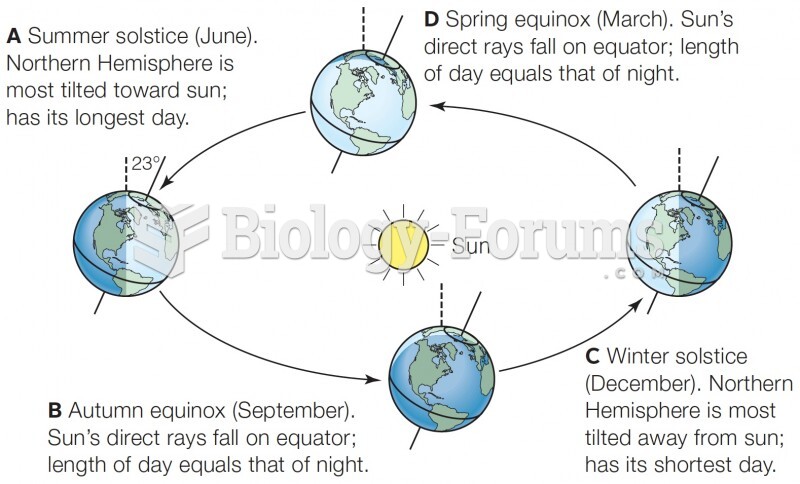Answer to Question 1
ANSWER: The largest diurnal range of temperature occurs on high deserts, where the air is fairly dry, often cloud-free, and there is little water vapor to radiate much infrared energy back to the surface. By day, clear summer skies allow the Sun's energy to quickly warm the ground which, in turn, warms the air above to a temperature often exceeding 38 degrees Celsius (100 degrees Fahrenheit). At night, the ground cools rapidly by radiating infrared energy to space, and the minimum temperature in these regions occasionally dips below 7 degrees Celsius (45 degrees Fahrenheit), thus giving an extremely high daily temperature range of more than 31 degrees Celsius (55 degrees Fahrenheit). A good example of a location with a large diurnal temperature range is the town of Winnemucca, Nevada, which is located at an elevation of 1310 m (4300 ft) above sea level. Here, in the dry, thin summer air, the average daily maximum temperature for July is 34 degrees Celsius (93 degrees Fahrenheit), but the average daily minimum temperature for July is only 11 degrees Celsius (52 degrees Fahrenheit). Winnemucca has a typical daily range in July of 23 degrees Celsius (41 degrees Fahrenheit)
Answer to Question 2
ANSWER: Student answers may vary slightly, but all should say that how cold the night air becomes depends primarily on the length of the night, the moisture content of the air, cloudiness, and the wind. Even though wind may initially bring cold air into a region, the coldest nights usually occur when the air is clear and relatively calm. Other factors that determine how cold the night air becomes are, for example, a surface that is wet or covered with vegetation can add water vapor to the air, retarding nighttime cooling. Likewise, if the soil is a good heat conductor, heat ascending toward the surface during the night adds warmth to the air, which restricts cooling. On the other hand, snow covering the ground acts as an insulating blanket that prevents heat stored in the soil from reaching the air. Snow, a good emitter of infrared energy, radiates away energy rapidly at night, which helps keeps the air temperature above a snow surface quite low.
Answer to Question 3
ANSWER: An appropriate answer would be that as the Sun rises in the morning, sunlight warms the ground, and the ground warms the air in contact with it by conduction. However, air is such a poor heat conductor that this process only takes place within a few centimeters of the ground. As the Sun rises higher in the sky, the air in contact with the ground becomes even warmer, and there exists a thermal boundary separating the hot surface air from the slightly cooler air above. Given their random motion, some air molecules will cross this boundary: The hot molecules below bring greater kinetic energy to the cooler air; the cool molecules above bring a deficit of energy to the hot, surface air. However, on a windless day, this form of heat exchange is slow, and a substantial temperature difference usually exists just above the ground.







